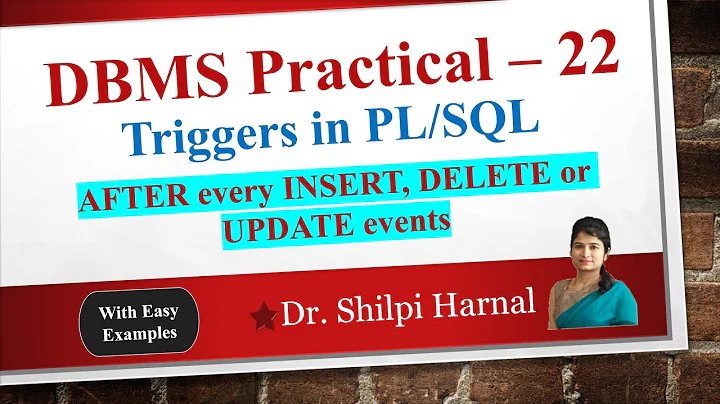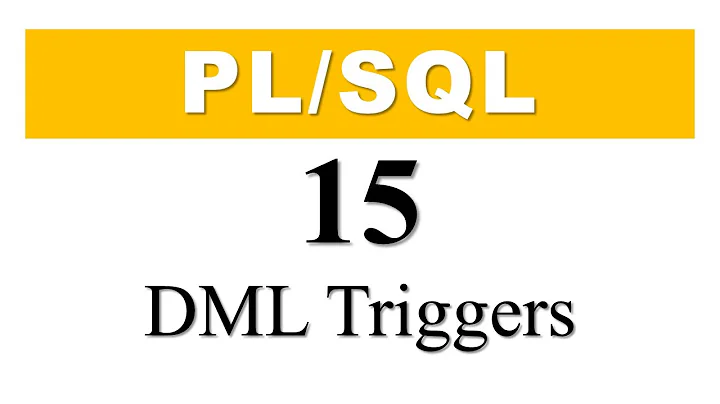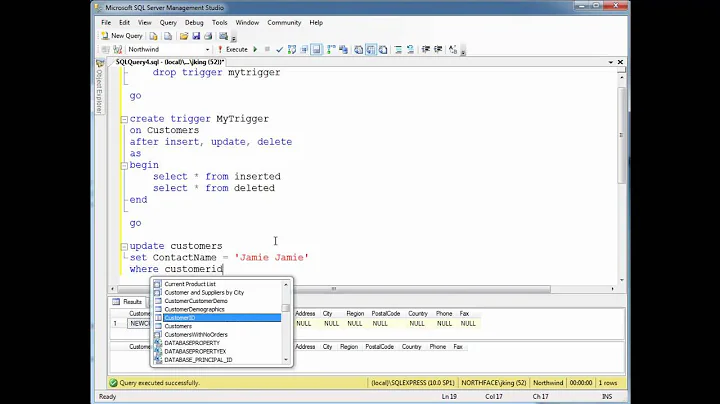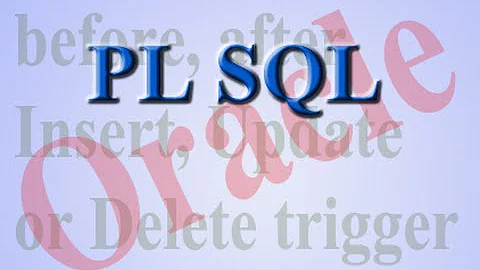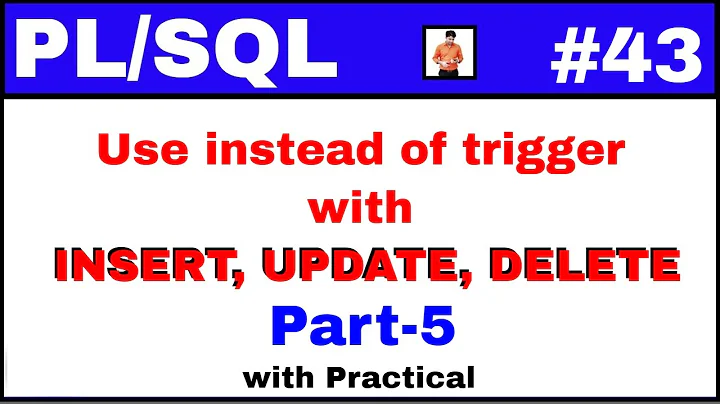ORACLE and TRIGGERS (inserted, updated, deleted)
Solution 1
From Using Triggers:
Detecting the DML Operation That Fired a Trigger
If more than one type of DML operation can fire a trigger (for example, ON INSERT OR DELETE OR UPDATE OF Emp_tab), the trigger body can use the conditional predicates INSERTING, DELETING, and UPDATING to check which type of statement fire the trigger.
So
IF DELETING THEN ... END IF;
should work for your case.
Solution 2
I've changed my code like this and it works:
CREATE or REPLACE TRIGGER test001
AFTER INSERT OR UPDATE OR DELETE ON tabletest001
REFERENCING OLD AS old_buffer NEW AS new_buffer
FOR EACH ROW WHEN (new_buffer.field1 = 'HBP00' OR old_buffer.field1 = 'HBP00')
DECLARE
Operation NUMBER;
CustomerCode CHAR(10 BYTE);
BEGIN
IF DELETING THEN
Operation := 3;
CustomerCode := :old_buffer.field1;
END IF;
IF INSERTING THEN
Operation := 1;
CustomerCode := :new_buffer.field1;
END IF;
IF UPDATING THEN
Operation := 2;
CustomerCode := :new_buffer.field1;
END IF;
// DO SOMETHING ...
EXCEPTION
WHEN OTHERS THEN ErrorCode := SQLCODE;
END;
Solution 3
The NEW values (or NEW_BUFFER as you have renamed them) are only available when INSERTING and UPDATING. For DELETING you would need to use OLD (OLD_BUFFER). So your trigger would become:
CREATE or REPLACE TRIGGER test001
AFTER INSERT OR DELETE OR UPDATE ON tabletest001
REFERENCING OLD AS old_buffer NEW AS new_buffer
FOR EACH ROW WHEN (new_buffer.field1 = 'HBP00' OR old_buffer.field1 = 'HBP00')
You may need to add logic inside the trigger to cater for code that updates field1 from 'HBP000' to something else.
Solution 4
Separate it into 2 triggers. One for the deletion and one for the insertion\ update.
Related videos on Youtube
Comments
-
 LeftyX almost 2 years
LeftyX almost 2 yearsI would like to use a trigger on a table which will be fired every time a row is inserted, updated, or deleted.
I wrote something like this:
CREATE or REPLACE TRIGGER test001 AFTER INSERT OR DELETE OR UPDATE ON tabletest001 REFERENCING OLD AS old_buffer NEW AS new_buffer FOR EACH ROW WHEN (new_buffer.field1 = 'HBP00')and it works. Since I would like to do the same things if the row is inserted, updated, or deleted, I would like to know what's happening in the trigger. I think I can manage to find if the row is inserted or updated (I can check the old_buffer with the new_buffer). How can I know if the row has been deleted?
-
 LeftyX almost 14 yearsThanks for your answer. It works. I have some problems with DELETING. I guess it is not trapped cause of this condition new_buffer.field1 = 'HBP00'.
LeftyX almost 14 yearsThanks for your answer. It works. I have some problems with DELETING. I guess it is not trapped cause of this condition new_buffer.field1 = 'HBP00'. -
 LeftyX almost 14 yearsThanks but I wanted to know how to identify the operation. Alberto
LeftyX almost 14 yearsThanks but I wanted to know how to identify the operation. Alberto -
 LeftyX almost 14 yearsI've figured it out 10 minutes ago ;-) Thanks. Alberto
LeftyX almost 14 yearsI've figured it out 10 minutes ago ;-) Thanks. Alberto -
pauloya almost 11 years@LeftyX That's why you should accept devio's answer, not Tony Andrews.
-
GACy20 about 2 yearsHow can you pass these information to other (e.g.) functions? For example, say I want to compute a value depending on whether it is inserting/updating/deleting and I have to do this in dozens of triggers. I'd like to make the code as DRY as possible, so ideally I'd like to be able to do
value := my_func(INSERTING, UPDATING, DELETING, ...other params)and just copy&paste that line in all my triggers... but what type should I give to the 3 parameters ofmy_func? Would this even work? Or we must useif inserting then my_insert_func(...other params) elsif updating then my_update_func(...)?

